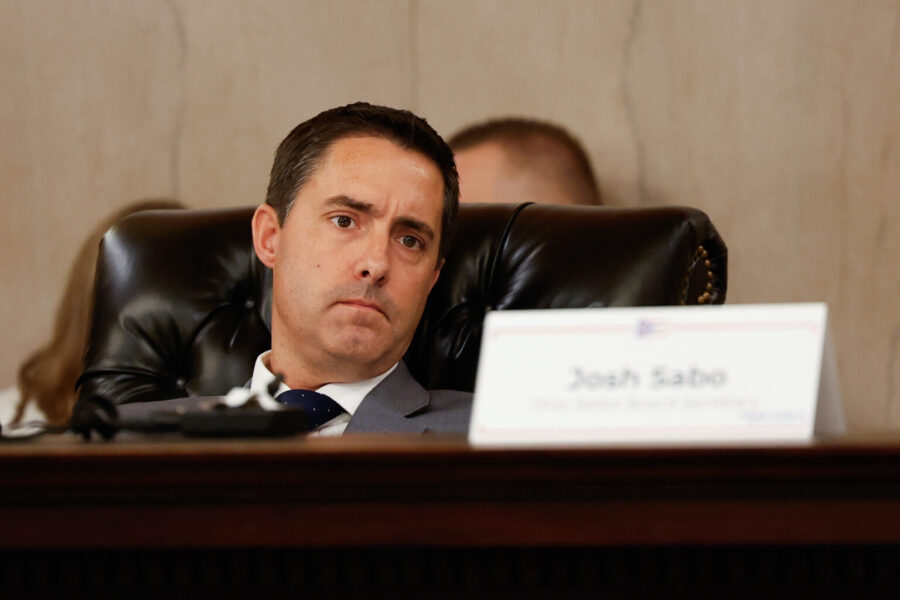Ohio Secretary of State Frank LaRose has purged hundreds of thousands of voters from the rolls, saying doing so is important to protect “election integrity.” But a watchdog has found that while LaRose professes to protect election integrity, Ohio has poor safeguards against removing eligible voters from the rolls.
By LaRose’s own accounting, fraudulent voting in Ohio is a problem that almost doesn’t exist.
LaRose found an infinitesimal 0.0005% “potentially illegal” voting in the last presidential election. Even so, he insists that his aggressive voter purges are for no purpose other than to protect the voter rolls.
It’s typical for election officials to perform routine maintenance on a state’s voter rolls. But some states go well beyond that, and a study last year indicated that Ohio’s practices were among those most likely to sweep eligible voters off the rolls — and those voters are more likely to be minorities, the American Bar Association said in a 2020 report.
A study of 10 states published late last year found that Ohio had the worst removal practices when it did voter purges, and that it was among the worst in terms of purging eligible voters.
It was produced by Dēmos, a progressive think tank dedicated to voter access, campaign finance reform and economic justice. Future President Barack Obama was a member of its founding board in 2000, and the group has in the past challenged LaRose’s purge tactics.
It singled out Ohio’s voter purges for special attention, saying “at nearly every turn, the state makes it hard for voters to stay on the registration rolls, and the totality of Ohio’s removal practices — from purging for inactivity to lack of notice to voters removed for alleged felony conviction or adjudication of mental incapacity, to a lack of process for voters to contest their removal, to expansive permissions to challenge a voter’s eligibility — make it likely that eligible voters will be improperly purged.”
LaRose’s office didn’t respond to questions for this story.
In an interview, Roni Druks, senior counsel at Dēmos, made the distinction between routine maintenance of voter lists and voting purges.
“Voter purges occur when election officials engage in practices like Ohio does that essentially result in the removal of otherwise qualified voters from the state voter rolls,” she said.
A main way Ohio and a minority of other states do that is through “use it or lose it” practices that the American Bar Association in 2020 said “ought to be seen as glaringly unconstitutional — purging people from the rolls solely because they have skipped voting in several consecutive elections and they have not responded to a letter asking them to confirm where they live.”
As Druks explained, there’s nothing in the law or the U.S. Constitution requiring people to vote to maintain their eligibility.
“Not voting isn’t a disqualification,” she said. “Being apathetic about our political process is not a voter disqualification. I think we should be reaching out to folks who feel disconnected.”
In 2019, LaRose’s office released a list of 235,000 voters about to be removed from the rolls. It was riddled with errors and about 40,000 — or 20% — were on it even though they were eligible voters, the New York Times reported.
In its 2020 report, the Bar Association noted, “Failure to vote regularly correlates with lower socioeconomic status and, at least in some places, with being a member of a racial minority,” it said.
Minority voters skew heavily to the Democratic Party. LaRose is a Republican.
Ohio Capital Journal is part of States Newsroom, a nonprofit news network supported by grants and a coalition of donors as a 501c(3) public charity. Ohio Capital Journal maintains editorial independence. Contact Editor David Dewitt for questions: [email protected]. Follow Ohio Capital Journal on Facebook and X.






